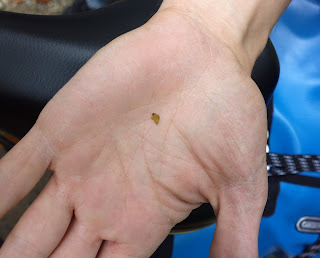I think its safe to say that appropriate gearing on a cargo bike/trike is more important than the gearing on a lightweight bike. The following gear chart can go a long ways towards finding a good gear ratio. I started making it shortly after we got our first Nihola and have been using it ever since to choose sprockets.
 |
| A bike gear ratio chart with 19 gearing systems and wheel combinations. |
The green lines are what I believe are official default Nihola ratios. Red lines are the ratios I have personally put some distance on. Some of the grey lines are from commuter bikes I have ridden, and others are just there because they have something to show. There is even a road bike.
The most important thing to see is that a particular gear hub can appear multiple times because the front and rear sprockets determine the output ratios in combination with the hub itself. The Nihola company and I disagree on what sprockets are appropriate to fit. I think they are choosing ratios that make it impossible for normal riders to get any use out of the highest gears. (I don't consider racing downhill to be useful.) Lower ratios can always be put to use.
Another important point is the "range" of a gearing system, that is, the highest ratio divided by the lowest ratio and expressed as a percentage. For an SRAM P5 of Shimano Nexus 7 this is about 250%, for a SRAM S7 or Shimano Nexus 8 / Alfine 8 this is about 300%. A bigger range means a bigger difference between the fastest and the slowest gears.
It is possible to fit a derailleur gearing system on a Nihola, possibly even with multiple chainrings in front. This can provide a huge gear range at a reasonable cost, but can leave the rider in a difficult situation because ratios can only be changed while moving, and its easy to end up not moving when trying to take on a steep hill. The Danish post office has a couple thousand derailleur-electric Nihola postal trikes which seems to be working well for them, but they aren't climbing mountains.
In my opinion, the best general-purpose gearing system for a Nihola is a Nexus 8 or Alfine 8 with the standard 38-tooth sprocket in front, and something like a 24, 23 or 22 tooth sprocket in back. A strong rider will run out of gears when empty on flat ground, but that should be at least 25km/hr which is tolerable for a cargo trike, in my opinion.










